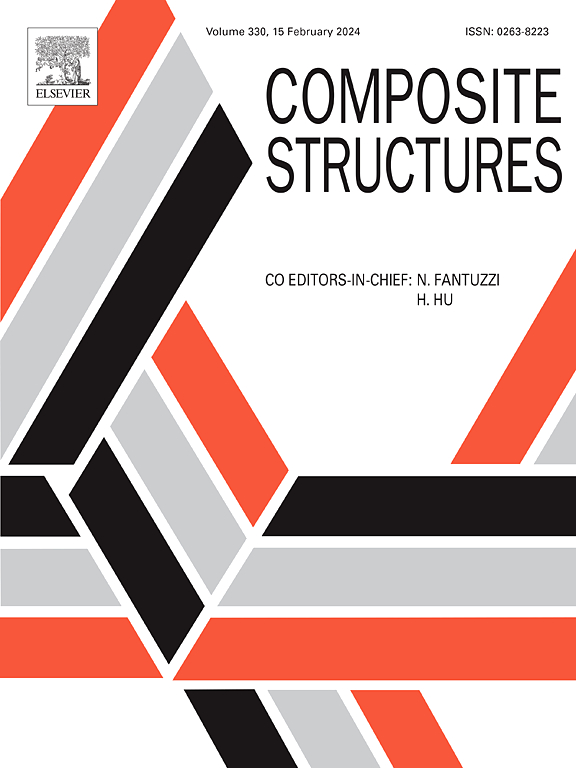碳纤维增强玻璃体复合材料力学性能的实验评价与多尺度模拟
IF 6.3
2区 材料科学
Q1 MATERIALS SCIENCE, COMPOSITES
引用次数: 0
摘要
玻璃体类似于传统的热固性聚合物,在工作温度下表现出相当的热稳定性和机械性能。超过临界温度阈值,由于其动态交联网络,它们显示热塑性行为。尽管他们的技术前景广阔,但目前的研究还没有充分解决玻璃体复合材料机械性能的系统表征——这是工程应用的基本要求。玻璃体基复合材料的力学性能可以通过改变不同的化学计量比来设计,本研究系统地研究了不同环氧/酸酐比下玻璃体基复合材料的拉伸、压缩和剪切力学行为,并与传统热固性复合材料进行了比较。结果表明,合理的环氧/酸酐比的玻璃体复合材料在室温下具有与传统热固性复合材料相当的力学性能。为了阐明Vitrimer复合材料的损伤起裂机理,建立了具有代表性的体积元(RVE)模型,包括基体弹塑性损伤本构模型和界面内聚模型,通过反求方法获得了纤维与基体之间的界面参数。仿真结果与实验结果具有较好的一致性。本文章由计算机程序翻译,如有差异,请以英文原文为准。
Experimental evaluation and multiscale simulation for the mechanical property of carbon fiber reinforced Vitrimer composites
Vitrimers resemble conventional thermosets, demonstrating comparable thermal stability and mechanical properties within operational temperatures. Beyond a critical temperature threshold, they display thermoplastic behavior due to their dynamic cross-linked networks. Despite their technological promise, current research inadequately addresses the systematic characterization of mechanical performance in vitrimer composites – a fundamental requirement for engineering applications. The mechanical properties of vitrimer composites can be designed by changing different stoichiometric ratios, this study systematically investigates the mechanical behaviors under tension, compression, and shear of Vitrimer-based composites at different epoxy/anhydride ratios, comparing them with traditional thermoset composites. The results demonstratethat Vitrimer composites with reasonable epoxy/anhydride ratio possess mechanical properties at room temperature that are comparable to traditional thermoset composite. To elucidate damage initiation mechanisms of the Vitrimer composite, a representative volume element (RVE) model was established, including matrix elastoplastic damage constitutive model and interface cohesive model, the interface parameters between fibers and matrix were obtained through inverse methods. Both simulation and experimental results show good consistency.
求助全文
通过发布文献求助,成功后即可免费获取论文全文。
去求助
来源期刊

Composite Structures
工程技术-材料科学:复合
CiteScore
12.00
自引率
12.70%
发文量
1246
审稿时长
78 days
期刊介绍:
The past few decades have seen outstanding advances in the use of composite materials in structural applications. There can be little doubt that, within engineering circles, composites have revolutionised traditional design concepts and made possible an unparalleled range of new and exciting possibilities as viable materials for construction. Composite Structures, an International Journal, disseminates knowledge between users, manufacturers, designers and researchers involved in structures or structural components manufactured using composite materials.
The journal publishes papers which contribute to knowledge in the use of composite materials in engineering structures. Papers deal with design, research and development studies, experimental investigations, theoretical analysis and fabrication techniques relevant to the application of composites in load-bearing components for assemblies, ranging from individual components such as plates and shells to complete composite structures.
 求助内容:
求助内容: 应助结果提醒方式:
应助结果提醒方式:


